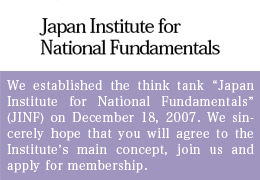Japan Finally Gets Ready to Resolve the Nuclear Disaster by Deploying Home-Made Disaster Relief Robots
On June 7, a ceremony was held at the Chiba Institute of Technology (CIT) in Narashino City near Tokyo to mark the leasing of its disaster relief robots to the Tokyo Electric Power Company (TEPCO). The occasion was significant in that it will be the first time that TEPCO, which operates the crippled Fukushima Daiichi nuclear complex, will deploy Japanese-made robots at the disaster site.
Called “Quince,” the device is self-propelled, weighing 27 kilograms and measuring 66 centimeters in length and 48 centimeters in width. CIT is leasing Quince free of charge. Quince has won wide recognition as having the most advanced capability in the world for roving over uneven mounds of debris, without falling over even at an incline of as much as 70 degrees. On June 9, two Quinces were carried out from CIT’s Future Robotics Technology Center (hereafter, the Center) bound for TEPCO’s No. 1 Nuclear Power Station, some 220 kilometers to the north. Then on June 10, they were deployed inside the no. 3 reactor building on a mission to install a water-level gauge in the basement, which is filled with radiation-tainted water.
At this site, American robots, such as the Talon, developed by Qinetiq North America (headquartered in McLean, Virginia) and Backpots by iRobot (headquartered in Bedford, Massachusetts), were deployed (also free of charge) more than a month ago, engaging in removal of debris and measuring radioactive dosage inside the reactor building.
The Quince robots, befitting Japan’s reputation as the nation with the world’s leading robotic technology, will finally start operating inside the reactor building, but what accounts for this great delay? Explains Professor Eiji Koyanagi, the Center’s Deputy Director:
“Following the Tokaimura criticality accident in September 1999, the Japanese government invested 3 billion yen (around $350 million) to develop robots for use at nuclear power stations. However, these robots, developed at great pains as well as expense, were abandoned after the government revised the law governing nuclear safety, and ‘improved’ the environment surrounding nuclear complexes. The government then declared that the plants were safe and that no nuclear accidents would happen in Japan. Robots for such nuclear power stations were now therefore redundant. As a result of such an utterly incomprehensible mindset on the part of government, Japan was completely devoid of the necessary robots when the disaster occurred at Fukushima in March.”
Having failed to receive any orders for such robots from TEPCO or from the Japanese government more than a week after the accident, Prof. Koyanagi and his colleagues decided to go right ahead and start preparations on their own. Osamu Setokuma, Managing Director of CIT, has this to say:
“I had the firm conviction that only the robots we have for years been experimenting with would qualify to operate under the severe conditions within the reactor building. Feeling absolutely committed to overcoming this challenge that I felt had been flung at the robotic technology of Japan, I urged Professor Koyanagi and his team of researchers to rise to the occasion.”
Faced with New Problems
Prof. Koyanagi recalls wireless and radiation were the two major problems initially, explaining:
“In order to make a robot sufficiently operable within a space that humans can’t enter, instructions must be transmitted wirelessly - and from some considerable distance away. I figured it would be about two kilometers, but the problem was that Japanese law does not permit a wireless device capable of sending signals over such a long distance. Only in late March this year, after I managed to obtain permission from the Wireless Bureau of the Ministry of Public Management, Home Affairs, Post, and Telecommunications, was I able to test a high-output wireless set.”
Prof. Koyanagi and his group bought a high-output wireless device from Taiwan and succeeded in sending signals to a receiving station at Makuhari Messe, some two kilometers away, from atop CIT’s roof. However, they subsequently discovered that the wireless set would not function properly when communicating with a robot operating within the reactor building.
“On April 13, we conducted an experiment using the building housing the decommissioned no. 1 reactor at the Hamaoka Nuclear Power Plant in Shizuoka Prefecture,” notes Prof. Koyanagi. “We then realized that wireless communications are blocked by the reactor building, and also that we would have to resort to cable communications in order to manipulate our robots from outside the reactor building at Fukushima.”
Prof. Koyanagi, who describes himself as an “outsider” when it comes to radiation, turned to members of his group at CIT, as well as Professor Kazuya Yoshida, an expert on aerospace engineering at Tohoku University, to study how exposure to radiation would affect the capabilities of the robots. He notes:
“Many experts have given serious warnings. For instance, when the radiological dosage rises, it may just be possible for the state of the robot to deteriorate so drastically that it may cease functioning in a few hours when it actually lasts a decade or so under less strenuous circumstances. Or, a built-in computer memory may get completely out of order, suddenly suffering ‘reverse bits’ to shift the bits of 0101 to, say, 0000 or 1111. So we decided to actually expose our built-in operating system to radiation, and see what would happen.”
On April 15 at the Takasaki Advanced Radiation Research Institute of the Japan Atomic Energy Institute (JAEI), Prof. Koyanagi and his group had the robot’s brain system exposed to 20 sieverts of radiation per hour for five consecutive hours - for an accumulated total of 100 sieverts.
Previously, the allowable level of accumulated radiological dosage for those engaged in work on the premises of a nuclear power station was set at 100 milli-sieverts a year. However, following the latest accident, the standard has been raised to 250 milli-sieverts a year. But the robot was exposed to 100 sieverts: one sievert equals 1000 milli-sieverts, and 100 sieverts therefore equals 100,000 milli-sieverts. The robot was thus subjected to an inordinate radiological dosage, which would certainly have instantly killed any human exposed to this extent.
Despite such an abnormal level of exposure to radiation, Prof. Koyanagi’s robot functioned properly. Five days later, an identical experiment was conducted once again, with the accumulated dosage raised to 200 sieverts this time. No serious effects were observed at this level either.
“That convinced us we would be able to overcome the radiation problem,” stresses Prof. Koyanagi. “But then, another tough problem cropped up, this one involving humidity. When U.S.-made robots entered the reactor building at Fukushima, humidity inside the structure was nearly 100 percent, clouding the lens and making it virtually impossible for the robots to move about.”
An experiment followed immediately inside a bath at one of CIT’s dormitories, with the boiler stoked up and the shower on full blast to generate steam. They first coated the lens attached to a video camera with ordinary wax, and then with water-repellent wax. But both attempts failed miserably. Comments Prof. Koyanagi:
“But we learned that the lens does not get clouded when heated with a hair dryer to 50 degrees Celsius. The robot itself will generate heat during operation, causing the lens to take a long time to cool off once it is warmed up, allowing a transmission of clear images continuously. But then, we also learned that vapor tends to seep into the inside of the camera, inevitably clouding the lens.”
This problem was solved by vacuum-packing the whole camera.
“Go for Broke, Quince!”
While Prof. Koyanagi was already convinced of Quince’s outstanding ability to glide over heaps of debris, he created a test site - just to be on the safe side - which had the same terrible conditions as the reactor buildings at Fukushima. Debris was piled up and narrow stairs with a steep incline of 40 degrees, similar to the ones leading to the basement at the plant, were constructed. The stairs were sprayed with water to make them slippery. The test itself was conducted in total darkness in the middle of the night.
The operations to be entrusted to the robot are extremely challenging. The robot must first carry the cables and proceed while undoing them gradually along the way, initially moving some 20 meters inward at a stretch from the entrance of the reactor building. Then, it will climb down narrow and steep stairs, to the depth of three to four underground floors, still undoing the cables as it keeps descending. It will then halt at a landing, lowering the water-level gauge through a six-centimeter gap in the railing to the pool of water below. It must then check to make sure the gauge has safely landed on the bottom, and then begin to measure the water level. After completing the operations, the robot finally climbs back up the stairs. At this time, the robot will set up a cable designed to monitor the gauge which has just been installed.
Simultaneously, the robot must wind up the cables through which it has received its own instructions, as it climbs up the steep stairs backwards, heading back to the entrance. Actually, that is the only way the robot can proceed, as the landing and the stairs are too narrow to make an about-face.
This has been the most difficult part, admits Prof. Koyanagi, explaining that the core TEPCO technicians who will be entrusted with operating Quince, being unfamiliar with the robot’s mechanisms, have had a difficult time making it wind up one cable and undoing the other, all this as it moves backwards. As a solution to this problem, Prof. Koyanagi’s team promptly came up with software for a system which makes it possible to do all these operations by manipulating one single button.
“We have drawn up all the plans for Quince by ourselves,” notes Prof. Koyanagi proudly. “We have supplied all the materials, so we can instantly tell the weight, material, and size of every part involved - down to the smallest screw. When the plans are drawn up, we all join hands in starting to work on the prototype from the next day. For example, the afore-mentioned button was completed just three days after the design was worked out.”
Preparations for Quince, as well as the people who will operate it, have thus been completed at long last. Now, it is time for Quince to go on center stage. In some ways, it may have gotten off to a late start. However, I have nothing but cheers for Quince as the incarnation of the high technological standard this nation is proud of.
(Translated from “Renaissance Japan” column no. 464 in the June 16, 2011 issue of The Weekly Shincho.)








